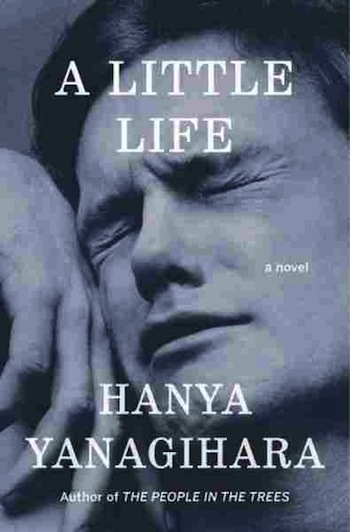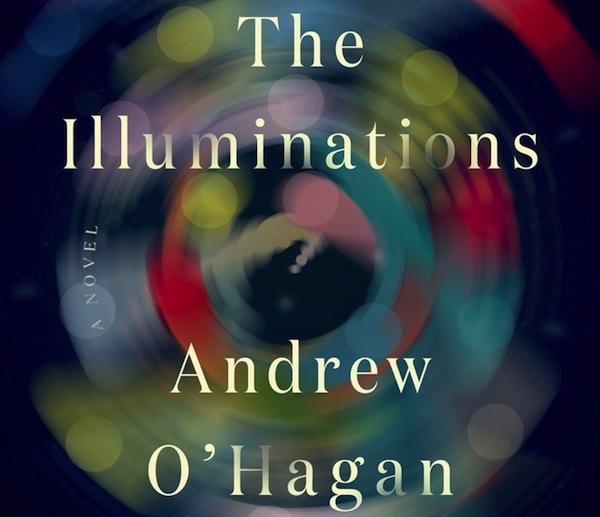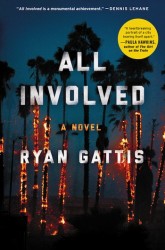Book Review: Three New Novels Explore the Power of Trauma
A trio of new novels suggest that bad as it gets may not be as bad as it can get.
By Tim Barry
There’s an old maxim that is often trotted out in 12-step programs: when you think you’ve reached the bottom be careful — “there’s a bottom below the bottom.” Bad as it gets may not be as bad as it can get. That notion of free fall proves fertile ground for compelling story lines in three very different new novels, all of which make use of the sort of graphic violence that makes readers shudder while it rivets their attention.
A Little Life by Hanya Yanagihara. Random House/Doubleday, 736 pages, $30.

A Little Life follows a group of post-college friends living the artistic life in downtown New York. The novel’s 726-page length encourages in-depth character development, but somehow author Hanya Yanagihara still manages to serve up some type-casting. The central character is Jude, a successful New York lawyer, whose psychological and physical challenges reach ever-pulverizing depths throughout the book.
In naming a character Jude, the writer invokes both St. Jude, the patron saint of lost causes, and the hapless protagonist in Jude The Obscure, Thomas Hardy’s masterful narrative about one of the most depressing lives in literature. The Jude here is a walking catalogue of psychological traumas. He’s a poster-child for PTSD, which he attempts to ameliorate not by drugs or alcohol, but through the means of ‘cutting’ — ritualistic self-bloodletting. It seems to work for Jude, at least for a while.
We learn a lot about the inner-workings of self-doubting Jude’s mind, but his fairy-tale success begs belief. We are told, not shown, that he is of the very highest intellectual caliber. We are told that he is a great trial lawyer, a savvy litigant who strikes fear into the hearts of his adversaries. But there is not much evidence to back up the superman claims.
There’s more type-casting among the supporting players: best-friend Willem is a struggling actor, drop-dead handsome of course, who, low and behold, eventually achieves huge box-office success. Similarly clichéd is the career trajectory of JB, an African-American painter (think Basquiat and his drug-sotted yet meteoric rise to fame and fortune).
Some unusual (and unconvincing) prose styling is on display. In one instance, Jude is being beaten up and is tossed down a staircase. In the horrible moment before he will smash into a bloody heap, his mind migrates to….mathematical axioms: “Always, absolutes, nevers: these are the words as much as numbers that make up the world of mathematics.”
Because several of the key players are lawyers, there are some quite interesting exchanges about legal theory and Supreme Court decisions. Likewise, there are nuanced glimpses into the art-world, and the business of filmmaking. As if that wasn’t enough, there is enough about male hustlers here to make this a surefire movie project for director Gus Van Zant.

The Illuminations by Andrew O’Hagan. Farrar, Straus and Giroux, 304 pages, $26.
If Andrew O’Hagan registers on most readers’ radar, it is because of his New York Times Magazine columns, which are marked by a funny and self-deprecating British style: it reaches back to the tradition of Lamb and Wodehouse, though with a contemporary update in the spirit of Nick Hornby and A.A Gill. A recent O’Hagan piece hilariously detailed all the reasons why he had to quit drinking, and why for a man in his social and professional circles that is all but impossible.
His fiction, though, with The Illuminations, comes off as something of a surprise. While there is humor, of the expected dark and darker variety, there also surfaces a probing exploration of family relationships, of human failings, of the little struggles that loom excessively large when they are our own.
The novel is built upon two alternating and connected stories — one about Alzheimer’s disease, with a clever sub-plot about artistic vision (the afflicted elderly aunt was a photographic artist); the other chronicles a very, very bad day in the Afghan War. The war sequences are rendered with such an exciting sense of impending chaos that the reader wouldn’t be blamed for skipping a dementia sequence or two simply to get back to the soldiers.
It is the aftermaths of trauma that interest O’Hagan the most, so the action scenes of the Afghan battlefield soon give way to an ex-soldier cooling his heels back home in Scotland, the “alcohol now clearing a path to the loneliest part of him.” Repatriated soldiers text each other constantly, bored now, anxious to return to the camaraderie of the battlefield.
Is the need for the pulse-quickening fix of combat firmly rooted in video-game culture? Can we believe O’Hagan is merely reporting what he saw and heard during a 2013 visit to Afghanistan?
They saw cheats and levels, badass motherfuckers, kill death ratios, and the kind of marksmen who jump up after they’re dead….. The boys wanted action. They wanted something real that would become the highest level, one they couldn’t reach on their consoles back home.
Echoes of Quentin Tarantino’s aesthetic ricochet throughout the book, especially during the downtime conversations about “the difference between Death Metal and Thrash Metal (music)….so the conversation went on all day, half the night, between joints and scran, boredom and mortars….and in a firefight, you only panic when the boys go silent.”
Popular novels exploring elder-dementia and military PTSD are squarely in the eye of the zeitgeist; witness Lisa Genova’s Still Alice and Phil Klay’s Redeployment. O’Hagan has nimbly folded two chic ideas into one book.
All Involved: A Novel of the 1992 L.A. Riots by Ryan Gattis. Ecco Press, 384 pages, $27.99.

Readers will be grateful to happen upon Ryan Gattis’s novel All Involved. The book tracks the interconnected lives of seventeen participants in the Rodney King riots, which shattered Los Angeles in 1992. This is a gangsta tale that shares the same bloodline as Richard Price’s Clockers and Freedomland; it is also steeped in the spiky atmospherics of Luis Rodriguez’s nonfiction volume Always Running. Yet All Involved is also a work of bird’s-eye sociology which calls to mind Adrian Nicole LeBlanc’s Random Family.
The family dynamics of thug-life inspire a larger story here — a narrative that registers America’s growing pains as it lurches into the multicultural present-day.
There’s a hidden America inside the one we portray to the world, and only a small group of people ever actually see it. Some of us are locked into it by birth or geography, but the rest of us just work here. Doctors, nurses, firemen, cops–we know it. We see it. We negotiate with death where we work because that’s just part of the job.
There’s quite a bit of death in this book. Grisly mayhem and vivid trauma at every turn. The title-term “all involved” refers to the status of gang-membership, which leaves those in its orbit open to sudden death at any moment. Their lives have value, but those values are subject to rapid changes.
Six days of chaos ensued when the riots erupted, and Gattis drops the reader into the middle of a post-apocalyptic tableau that could be right out of a science-fiction yarn. Even “the good-guys,” the police, cross the line into nihilistic vigilantism — the gangbangers here aren’t the only ones who dwell in a Clockwork Orange-like netherworld. The defining credo is not just kill-or-be-killed — sometimes it is if-in-doubt, kill-anyway.
Gattis does an especially effective job bringing to life the smells, the sights, the sounds of a scary urban place: “…each time she cut his head (with a broken bottle) and blood came out, his hair soaked up the blood. No kidding. It made a little sound when it did it too, every time, like fwoop.”
Indeed, the cadences of speech and the argot of the ghetto are masterfully evoked; Gattis’s life in L.A. and his acquaintance with cholo culture is put to good use in All Involved.
Tim Barry studied English literature at Framingham State College and art history at the University of Massachusetts-Dartmouth. He has written for Take-It Magazine, The New Musical Express, The Noise, and The Boston Globe. He owns Tim’s Used Books, Hyannis, and Provincetown, and TB Projects, a contemporary art space, in Provincetown.
Tagged: A Little Life, All Involved, Andrew O’Hagan, Hanya Yanagihara, Ryan Gattis, The Illuminations, Tim Barry
